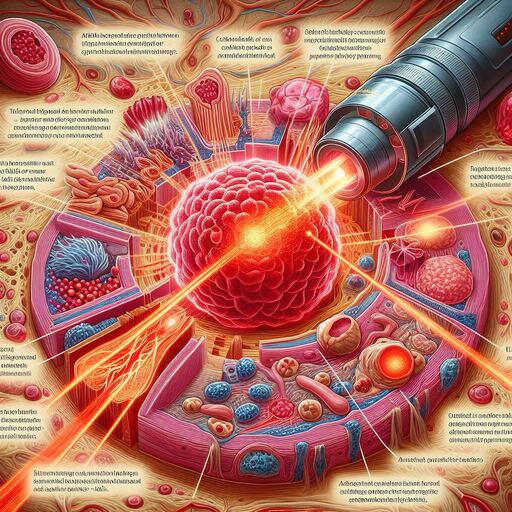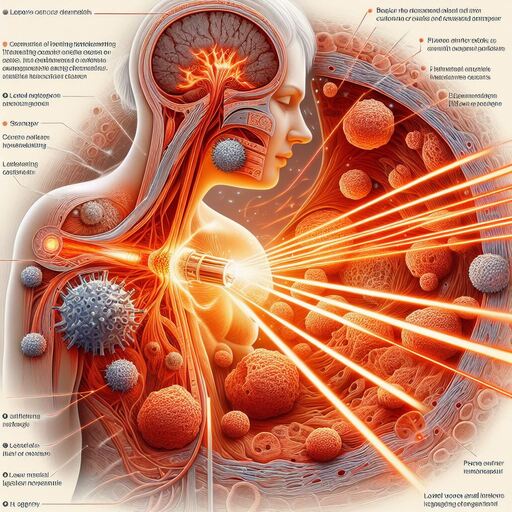Precision Medicine Unleashed The Innovations and Impact of Ablation Therapy
Precision Medicine Unleashed The Innovations and Impact of Ablation Therapy
In the realm of modern healthcare, precision medicine has emerged as a groundbreaking approach, allowing tailored treatments based on individual characteristics. Ablation therapy stands at the forefront of this revolution, offering targeted solutions for various medical conditions. This article explores the innovations and profound impact of ablation therapy in the era of precision medicine.
Understanding Ablation Therapy
Precision Medicine Unleashed The Innovations and Impact of Ablation Therapy
Ablation therapy involves the precise removal or destruction of abnormal tissues within the body using various energy sources. This minimally invasive technique is designed to selectively target specific areas while minimizing damage to surrounding healthy tissues. Ablation can be performed using different modalities, including radiofrequency, cryoablation, microwave, and laser, depending on the condition being treated.
Innovations Driving Precision
- Image-Guided Techniques: Advances in imaging technology, such as ultrasound, CT scans, and MRI, have revolutionized ablation procedures. Real-time imaging allows clinicians to visualize the target tissue and surrounding structures with exceptional clarity, ensuring precise placement of the ablation probe and accurate treatment delivery.
- Navigation Systems: Sophisticated navigation systems integrate imaging data with real-time tracking of the ablation device within the body. This technology provides enhanced precision and allows clinicians to navigate complex anatomical structures more effectively during the procedure.
- Integration of Robotics: Robotics-assisted ablation systems enable highly controlled and automated procedures. These systems can perform precise movements based on pre-programmed parameters, further optimizing accuracy and reducing variability in treatment outcomes.
- Advancements in Energy Sources: Continuous innovations in energy sources, such as radiofrequency, microwave, and cryoablation, have expanded the applications of ablation therapy. Newer energy modalities offer increased efficiency, faster treatment times, and improved tissue penetration, enhancing the effectiveness of ablation for various medical conditions.
Impact of Ablation Therapy in Clinical Practice
- Cardiac Arrhythmias: Ablation has transformed the management of cardiac arrhythmias, including atrial fibrillation and ventricular tachycardia. By selectively targeting abnormal electrical pathways in the heart, ablation can restore normal rhythm and reduce the need for anti-arrhythmic medications.
- Cancer Treatment: Ablation therapy plays a pivotal role in the treatment of solid organ tumors, such as liver, kidney, lung, and bone tumors. It offers a minimally invasive alternative to surgery for patients who are not surgical candidates or prefer less invasive interventions. Ablation can be used as a primary treatment modality or in combination with other therapies, such as surgery or chemotherapy.
- Pain Management: Ablation techniques are employed in pain management to disrupt nerves responsible for transmitting pain signals. Radiofrequency ablation, in particular, is used to alleviate chronic pain conditions, such as lower back pain, neck pain, and joint pain, providing long-lasting relief for patients.
- Gynecological Procedures: Endometrial ablation is used to treat excessive menstrual bleeding (menorrhagia) in women who do not wish to undergo a hysterectomy. This outpatient procedure effectively destroys the uterine lining, reducing menstrual flow and alleviating symptoms.
Challenges and Future Directions
Precision Medicine Unleashed The Innovations and Impact of Ablation Therapy
Despite its remarkable benefits, ablation therapy faces challenges related to patient selection, procedural complexities, and long-term outcomes. Variability in tumor characteristics, operator experience, and tumor recurrence are areas of ongoing research. Future advancements may focus on refining patient selection criteria, optimizing treatment protocols, and integrating ablation therapy with other precision medicine approaches, such as immunotherapy and targeted therapies.
Conclusion
Ablation therapy exemplifies the transformative potential of precision medicine, offering targeted treatments tailored to individual patient needs. From treating cardiac arrhythmias to combating cancer and managing chronic pain, ablation has reshaped clinical practice and improved patient outcomes. As technologies continue to evolve and research advances, the impact of ablation therapy is poised to expand, ushering in a new era of personalized and effective healthcare.
Precision Medicine Unleashed The Innovations and Impact of Ablation Therapy

